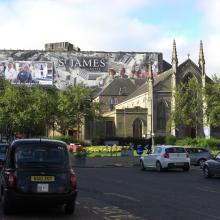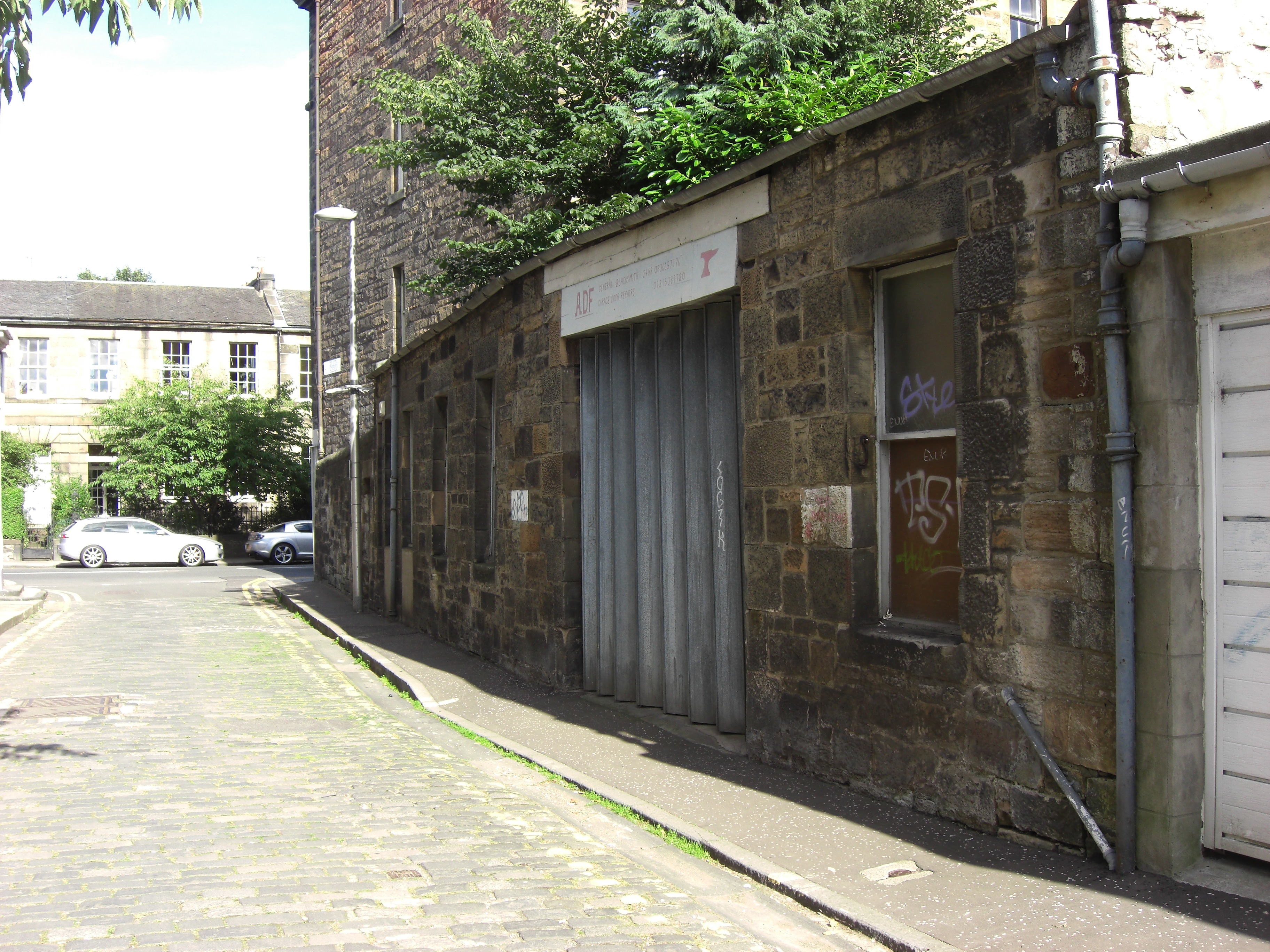
Henderson Global Investors last month announced a public pre-application consultation event to air plans for the King James Hotel's removal and rebuild at Picardy Place (Ref. 13/03853/PAN; Issue 223, p. 2).
That meeting has now been cancelled. No reason was given.
A revised date for it is expected to be announced later this week. Watch this space.
*****
The application is in addition to its earlier application for a 'spiegeltent bar', market stalls, fairground rides, nativity scene, box office and associated site office and stores.
The proposal entails temporarily replacing two sections of railings with steel plates and bolts to provide access. 'Immediately after the event has finished these railings will be replaced as gates and there will be no obvious visible difference to the railings, compared to how they look at present.'
*****
Planning permission and listed building consent are sought to convert an A-listed empty office/commercial premises into a single-bedroom residential building at 4 Albany Street Lane (Ref. 13/03947/FUL).
The work would include raising the wall-head by 450mm and replacement of the roof with a 'traditional' glazed roof lantern'.
The accompanying design statement by TMS Planning and Development Services Ltd says that: 'The applicant is keen to find an appropriate and practical re-use for the building ... in order to retain its quality and contribution it makes towards the built environment in this part of Edinburgh.'
Later it concludes that:
- the proposal would preserve the identified qualities of the World Heritage Site area
- the alterations are justified and would not damage the historic structure or diminish its interest
- the development would preserve and enhance the special character and appearance of the conservation area and demonstrate a high standard of design, utilising materials appropriate to the historic environment.
The current proposal for the former coach house is considered more 'appropriate and deliverable' (by the applicant) than the lapsed consent granted at appeal in February 2008 (Ref. 07/02094/FUL).
Spurtle has no particular objection to the plan, although the differences between damaging, preserving and enhancing an A-listed building (by raising the walls and redesigning the roof) may appear blurred to the layperson.
In their difficult consideration of the rules, we imagine Council officials will welcome the informative and knowledgeable tone of this particular Supporting Planning and Design Statement just as Rugby Union referees welcome the knowledgable and informative observations of scrum halves.
*****

Consent has been granted to convert 8–10 Tanfield from commercial storage of increasingly triangular goods to a 2-storey dwelling for increasingly triangular people (Ref. 13/03055/FUL), including alterations and extension to the existing property.
Spurtle rather liked this proposal in Breaking news (27.8.13) and so, it seems, did City of Edinburgh Council:
The proposed change of use is compatible with the character of the area and will provide an acceptable level of accommodation and amenity for the future occupants. The proposed alterations to the building are acceptable in scale and design and will not be detrimental to neighbourhood character. The proposal will not result in an unreasonable loss to neighbouring privacy. The proposal will also preserve the character and appearance of the conservation area. The proposal complies with planning policies and there are no material considerations to justify refusal.
John A. Lawson, City of Edinburgh's Curator of Archaeology, remarked:
This stone building dates to between 1820 & 1850 and is one of the last surviving structures associated with the former 19th [Century] Tanfield Gasworks. As such is regarded as being of local archaeological significance as a surving element of Edinburgh’s Industrial past. Accordingly this application must be considered therefore under terms the Scottish Government Historic Environment Policy (SHEP), Scottish Planning Policy (SPP), PAN 02/2011 and also Edinburgh City Local Plan (2010) policy ENV9. The aim should be to preserve archaeological remains in situ as a first option, but alternatively where this is not possible, archaeological excavation or an appropriate level of recording may be an acceptable alternative.
No such condition seems to have been added to the consent, which seems a shame. However, from Spurtle's limited understanding of the work proposed, it appears that there would be little opportunity for unearthing much of interest here.
Visit this RCAHMS site for photos of what used to exist at the site.